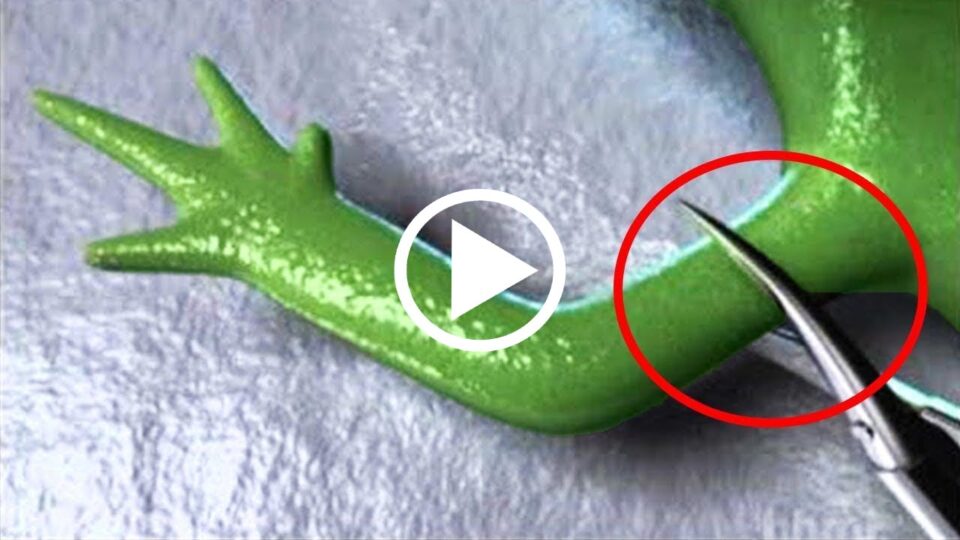No one likes the thought of growing old. Despite many human endeavors to escape or delay the process of aging, it seems to be an inevitable part of life.
But… why? Why do living things gradually fall apart when they grow older? There is a word for it: senescence.
No, it’s not the rock band who sang ‘Bring Me to Life’; senescence is the state of gradual deterioration of normal functioning.
At the cellular level, it means cells stop dividing and they eventually die. While there are ways, we can slow down the rate at which senescence occurs, it is still going to happen one way or another.
However, a few species can escape the aging process completely.
Today we countdown 15 animals who can live forever. It’s time to put some anti-aging cream on and watch carefully if you want to live forever.
The Olm Salamander
Number 15 on our list is the Olm Salamander. The olm, a foot-long salamander nicknamed “the human fish” because of its fleshy skin and tubular shape, is certainly a strange-looking animal.
But beneath the surface, they’re even weirder: Olms can live for 100 years, far longer than any other amphibian. Scientists have no idea why.
Living in a stable environment without predators has made it possible for olms to have long lives, but the mechanisms underlying their longevity are unknown.
In general, long life correlates with a large body size, but the half-pound salamanders are pipsqueaks compared to the next-longest-living amphibian, the 50-pound Japanese salamander, which clocks in with a 55-year lifespan.
Researchers also wonder if olms have special tricks for cleaning up oxygen-free radicals, the DNA-damaging molecules produced when cellular mitochondria turn nutrients into energy.
Free-radical accumulation is linked to aging, but the olm’s antioxidant activity is nothing special. Scientists are now testing whether the olm might have extra-efficient mitochondria that emit fewer free radicals to begin with.
If you manage to produce more energy with less free-radical production, then you can avoid aging and increase lifespan.
Turritopsis Dohrnii
Number 14 on our list is the Jellyfish. To date, there are only one species that has been called ‘biologically immortal’: the Turritopsis dohrnii.
These small, transparent animals hang out in oceans around the world and can turn back time by reverting to an earlier stage of their life cycle.
Wouldn’t you like to do that? Life for this jellyfish begins with a fertilized egg, which grows into a larval stage called a planula.
After a quick swim, the planula latches onto a surface where it develops into a tube-shaped structure with a mouth at one end and a kind of ‘foot’ at the other.
Eventually, depending on the jellyfish species, one of these polyps will form an outgrowth called a ‘bud’, or it may produce separate segments stacked on top of one another, which can then
break away from the rest of the colony.
This process is responsible for the next stages of the jellyfish life cycle: For most other jellyfish, this stage is the end of the line.
But the Turritopsis dohrnii has a neat party trick: when it faces some kind of environmental stress, like starvation or injury, it can revert back to being a tiny blob of tissue, which then changes back into the sexually immature polyp phase of life.
It is a bit like a butterfly turning back into a caterpillar, or a frog becoming a tadpole again. It can restart life anytime it feels like it. A sort of a jellyfish “Groundhog Day”.
Of course, the Turritopsis dohrnii isn’t truly ‘immortal’. They can still be consumed by predators or killed by other means.
However, their ability to switch back and forth between life stages in response to stress means that, in theory, they could live forever.
The Hydra
Number 13 on our list is the Hydra. In ancient Greek myth, the Hydra was a multi-headed monster that grew two more heads for everyone it lost. As it turns out, the real-life animal named after this mythical beast may be even more tenacious.
Hydra are very simple animals that spend their days mostly staying in one place in freshwater ponds or rivers and using their stinging tentacles to grab any prey that happens to swim past them.
Their claim to immortality? It appears they don’t go through senescence at all. Instead of gradually deteriorating over time, a Hydra’s stem cells have the capacity for infinite self-renewal.
This seems to be thanks to a set of genes called “Fox O genes”, which are found in animals from worms to humans and play a role in regulating how long cells will live for.
In the case of Hydra’s stem cells, there seems to be an overabundance of the “Fox O gene” expression.
When researchers prevented “Fox O genes” from functioning, they found that Hydra’s cells began to show signs of ageing and would no longer regenerate as they did before.
Scientists still don’t know exactly how it all works, but they do know these genes clearly play an important role in maintaining Hydra’s endless youthfulness.


